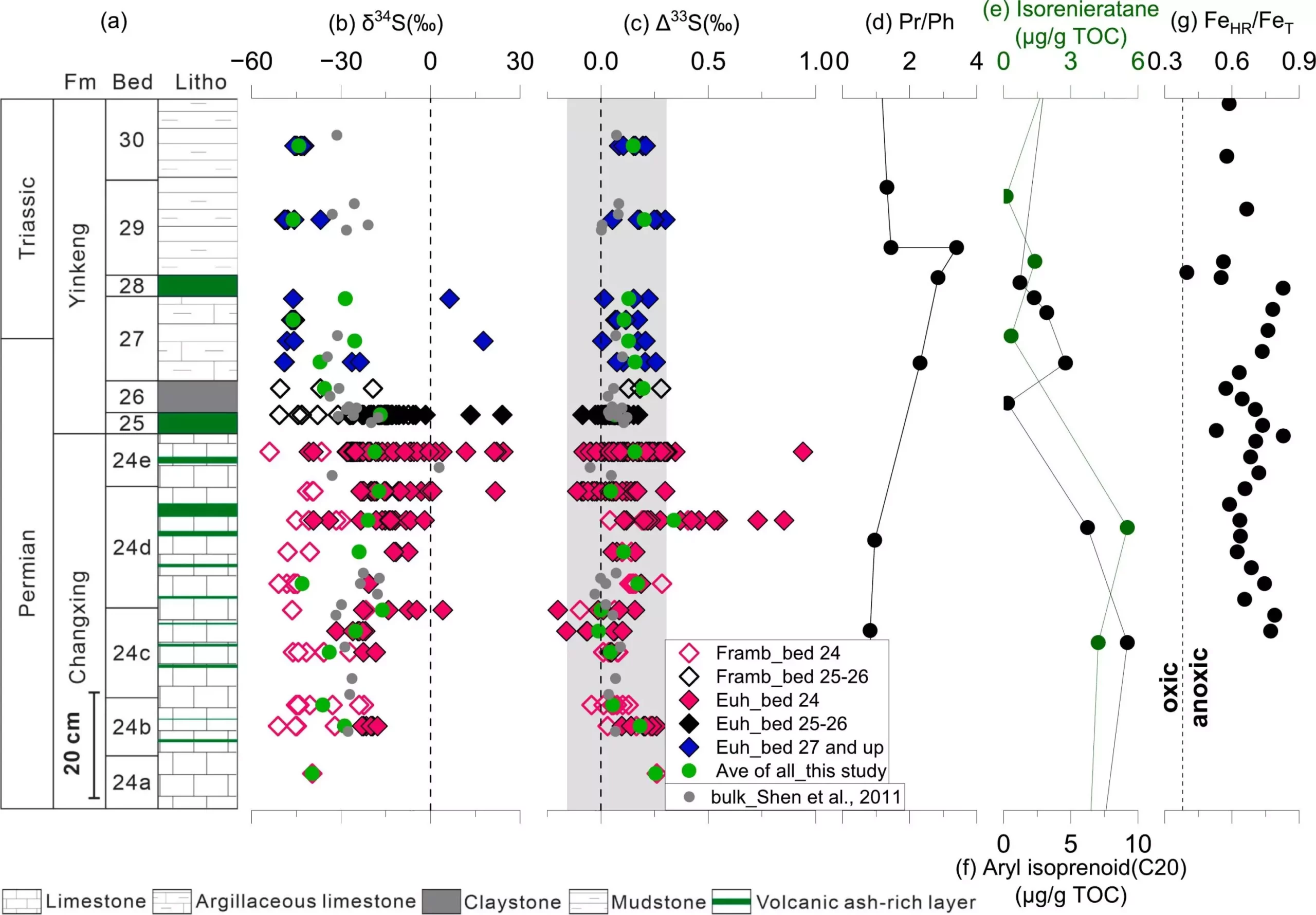The notion of devastating mass extinctions that decimated Earth’s ecosystems millions of years ago has captivated both the general public and scientific community for decades. In 1982, Jack Sepkoski and David Raup made a breakthrough with their publication that identified the “Big Five” extinction events in the planet’s geological history. Among these, the end-Permian event stands out as the most significant, resulting in the extinction of approximately 81% of marine species and 70% of terrestrial vertebrate species. Land plants also suffered significant mutations and destruction during this catastrophe. Recent research published in Chemical Geology explores the link between volcanic activity, ozone layer damage, and the subsequent irreversible changes that unfolded across the planet.
Explosive volcanism in the Siberian Large Igneous Province is believed to be the primary trigger for the end-Permian mass extinction. This volcanic activity spanned an estimated 7,000,000 km2 and left massive pyroclastic flow deposits in its wake. The aftermath of this cataclysmic event led to a range of damaging effects, including ocean anoxia, hydrogen sulfide poisoning, acid rain, ozone depletion, and global warming.
Dr. Rucao Li and colleagues from Nanjing University conducted research that explored the relationship between volcanic emissions, ozone layer destruction, and the resultant changes to Earth’s ecosystem. The team analyzed sulfur isotopes in pyrite from the Meishan section in South China using secondary ion mass spectrometry.
The study revealed a distinct positive change in Mass-Independent Fractionation sulfur isotopes (MIF-S) in a bed below the designated end-Permian bed, accompanied by an increase in the abundance of ash layers. However, no significant MIF-S signal was identified at the Global Stratotype Section and Point (GSSP) of the Permian-Triassic Boundary. The researchers noted that such striking shifts are uncommon in rocks younger than 2 billion years old due to the progressive increase in the planet’s oxygen budget and ozone formation over time, which affects sulfur oxidation.
The catastrophic consequence of volcanic emissions is closely linked to the photolysis of sulfur dioxide by ultraviolet radiation. When explosive volcanism disrupts the ozone layer and reaches the stratosphere, it reduces the number of oxygen molecules that block incoming solar ultraviolet radiation. This leads to the conversion of sulfur dioxide molecules to MIF-S sulfate aerosols, which are then transported from land to the oceans. Modeling indicates a decrease in atmospheric oxygen from 30% in the Phanerozoic to half that by the end-Permian.
Sulfate-reducing bacteria in the ocean convert MIF-S-preserving molecules to hydrogen sulfide. As a result, the marine realm becomes sulfidic and anoxic, creating a catastrophic combination for survival. High-intensity ultraviolet radiation on land damages terrestrial organisms, while oxygen-producing organisms in the shallow photic zone of the sea also suffer. The decline in oxygen supply filters through the water column, leaving no refuge for life on Earth.
While the concerns over ozone depletion in recent decades do not reach the same devastating scale as the end-Permian event, they have very real consequences for terrestrial and marine organisms, as well as humans. The fragility of our ozone layer calls for continued vigilance and efforts to mitigate the factors contributing to its destruction.
The research conducted by Dr. Rucao Li and colleagues sheds light on the impact of volcanic activity on the destruction of Earth’s ozone layer. By studying sulfur isotopes, they provide insights into the catastrophic consequences of ozone depletion during the end-Permian mass extinction event. This research serves as a reminder of the vital role played by the ozone layer in preserving life on our planet and underscores the importance of protecting it from further harm.


Leave a Reply